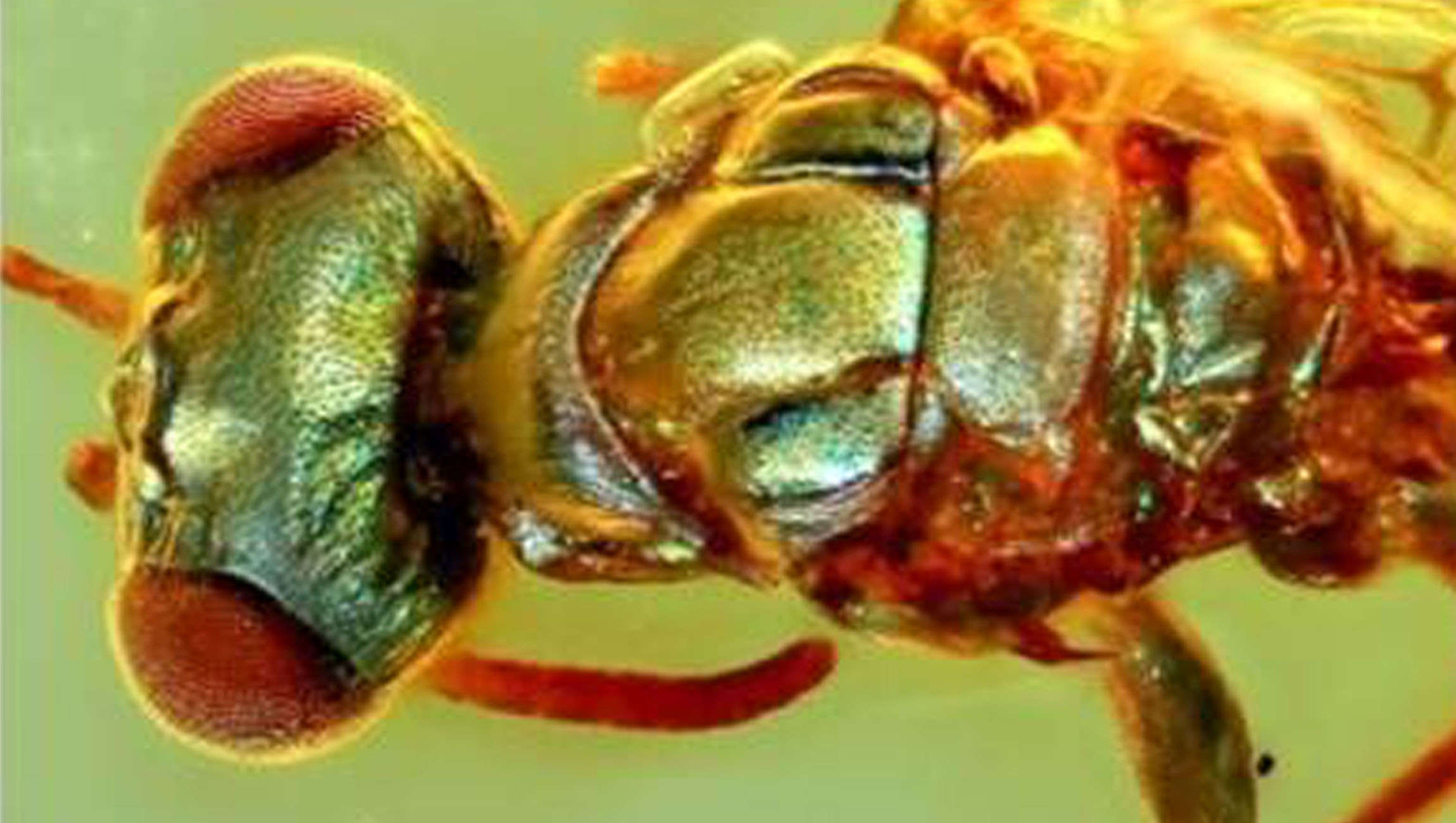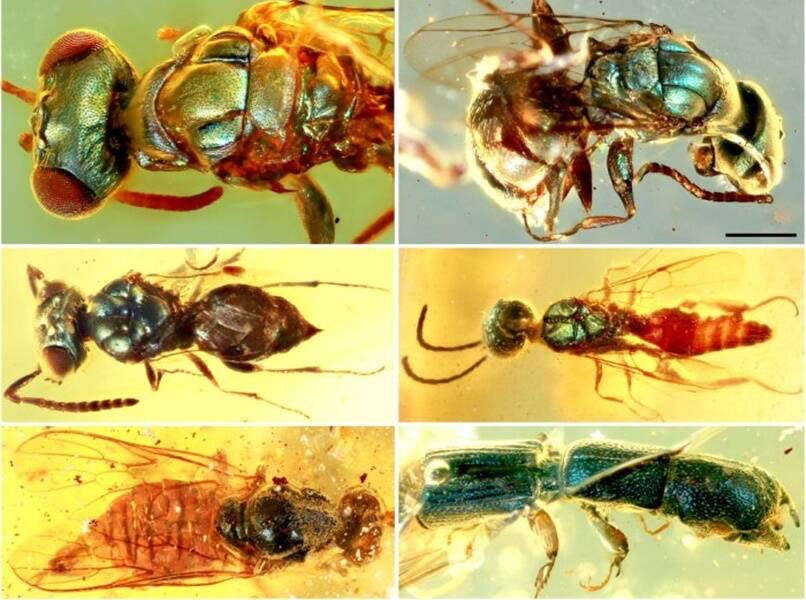Create a free profile to get unlimited access to exclusive videos, sweepstakes, and more!
The preserved colors of 99-million-year-old bugs reveal prehistoric secrets of survival

While most of the brilliantly illustrated dinosaurs and other prehistoric creatures you see in movies and on the internet only reflect guesses as to what colors they actually were (did Jurassic Park screw up again without even knowing it?), sometimes fossils can offer a glimpse.
Frozen in amber for almost a hundred million years, some unreal insects were recently unearthed in Myanmar by researchers from the Nanjing Institute of Geology and Paleontology of the Chinese Academy of Sciences (NIGPAS). They showed off colors that were preserved so well it was as if they had flown straight through eons and eons. While the jewel-toned bugs look like once-living gemstones, their structural coloration could tell us things about adaptation and survival during the Cretaceous period that only a time warp otherwise would.
“The green to blue structural colors in fossil wasps, beetles and a fly most likely functioned as camouflage, although other functions such as thermoregulation cannot be ruled out,” the scientists said in a study recently published in Proceedings of the Royal Society B.
Striking samples such as the ancient wasps and other insect species collected by the team are rare. What the team noticed was that the specimens which had retained their color had a smooth epicuticle, or protective outer layer, unlike the duller ones whose epicuticles showed signs of cracking and texture associated with destruction during fossilization. Nanostructures called multilayer reflectors produce vivid colors in flora and fauna. These reflectors reside in the epicuticle, and the same dehydration process that mummifies insects during fossilization in amber is possibly the reason color fades.
Because fossils like these are so elusive, they can offer a window into a lost world. It is not definitely known whether these were the original colors of the insects, or whether they were altered in the fossilization process, but the scientists believe they are original so long as the integrity of the nanostructures has not been compromised. The colors are believed to have likely acted as camouflage in a brutal world where things grew to gargantuan sizes and the objective was to avoid being eaten.
Flashy hues only seem counterintuitive to camouflage. Structural coloration in extant animals can serve many purposes next to making them blend into their surroundings, from attracting a mate to warning predators that they are poisonous. The preserved cuckoo wasp specimens look almost exactly like cuckoo wasps do today. These stingless wasps are kleptoparasites, meaning they steal the nests of other insects to lay their own eggs. Their iridescent blue-green coloring helps them disappear into leaves, as other studies have shown that iridescence makes an animal difficult to spot against a background of a similar color. Other insects have a difficult time recognizing the shape of their iridescent brethren as it perches on a nearby leaf, just waiting to snatch up a nest free of rent.
The scientists are almost positive that the multichrome insects’ structural coloration was meant for camouflage, and even think the fossils hint at cuckoo wasps’ stealing behavior evolving by at least the mid-Cretaceous. They still stressed that there could be other cryptic reasons behind it. Mating displays were pretty much ruled out because the males and females were not dimorphic, with no flashier males to attract more drab females. Thermal regulation is still a possibility. Brilliant gold longicorn beetles refract light off their metallic forewings, deflecting it so it won’t be absorbed.
“This discovery not only provides critical evidence of evolution of structural colors in arthropods,” the team concluded, “but also sheds light on the preservation potential of nanostructures of ancient animals through geological time.”



























